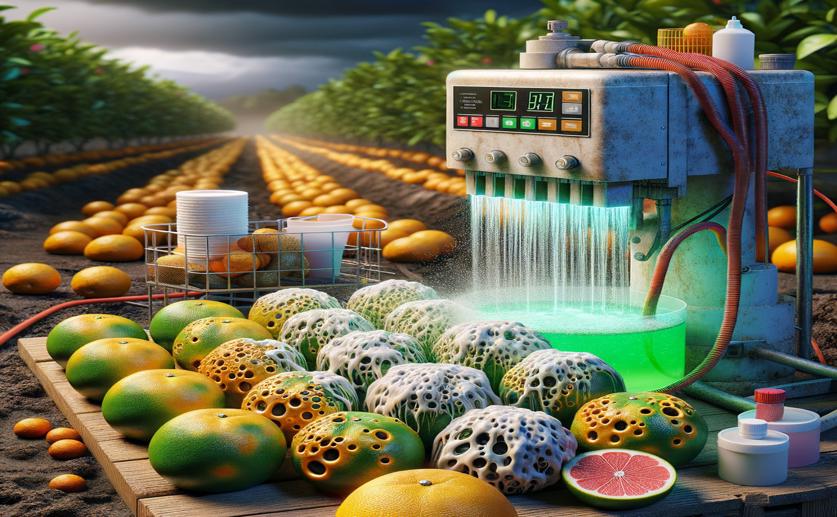
Fighting Citrus Rot with Acidic Electrolyzed Water
Greg Howard
7th June, 2024

Image Source: Natural Science News, 2024
Key Findings
- Researchers in Fujian isolated two fungi, Penicillium citrinum and Aspergillus sydowii, causing rot in tangelos
- Acidic electrolyzed water (AEW) was found to effectively inhibit these fungi, reducing their growth significantly
- AEW treatment caused physical damage to the fungi, disrupting their cell membranes and leading to cell death
AgricultureBiochemPlant Science
References
Main Study
1) Isolation and Identification of Postharvest Rot Pathogens in Citrus × tangelo and Their Potential Inhibition with Acidic Electrolyzed Water
Published 6th June, 2024
https://doi.org/10.1007/s12560-024-09604-4
Related Studies
2) Enhanced storability of blueberries by acidic electrolyzed oxidizing water application may be mediated by regulating ROS metabolism.
3) Effects of acidic electrolyzed water treatment on storability, quality attributes and nutritive properties of longan fruit during storage.



 4th June, 2024 | Jenn Hoskins
4th June, 2024 | Jenn Hoskins